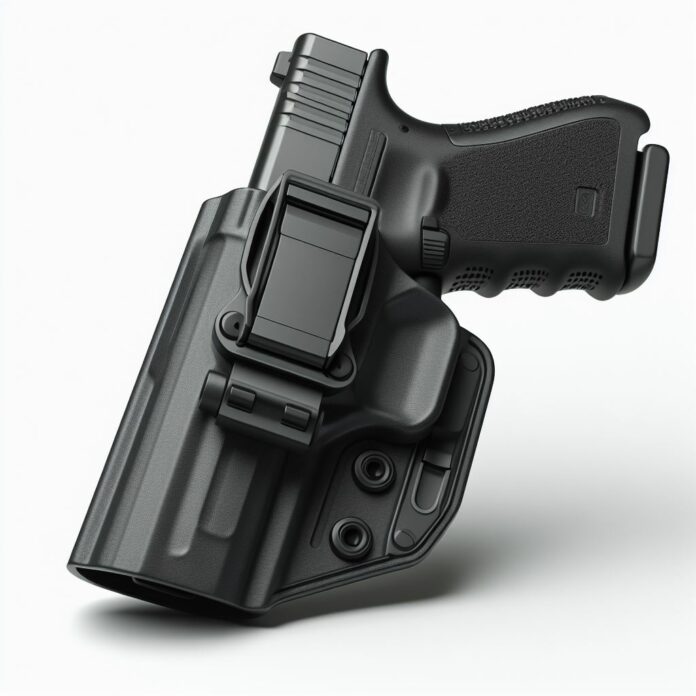Retention holsters are popular among gun owners, offering enhanced safety and security by providing an additional level of protection to keep the firearm in place.
However, it is crucial to understand how to adjust a retention holster in order to ensure optimal functionality and comfort.
Retention holsters are specifically designed holsters that provide an additional mechanism to secure firearms in place. They are commonly used by law enforcement officers, military personnel, and civilians who prioritize firearm retention.
Adjusting a retention holster is essential to ensure a proper fit and draw, maximizing both safety and ease of use. Ill-fitting holsters can be uncomfortable, hinder quick access to the firearm, or compromise the security of the weapon.
There are different levels of retention holsters available, each offering varying levels of security. The common types include:
1. Level 1 Retention Holsters: These holsters feature a single retention mechanism, such as friction or tension retention, to secure the firearm in place.
2. Level 2 Retention Holsters: Level 2 holsters incorporate an additional retention mechanism, such as a thumb break or strap, along with friction or tension retention.
3. Level 3 Retention Holsters: Level 3 holsters provide the highest level of retention, often including multiple retention mechanisms, such as thumb breaks, hoods, or rotating hoods.
To properly adjust a retention holster, follow these steps:
Ensure the firearm is unloaded and remove any accessories or attachments. Familiarize yourself with the holster’s design and components.
Identify the retention screws, straps, or other adjustable parts on the holster. Refer to the manufacturer’s instructions if needed.
Gradually tighten or loosen the retention screws or straps until you find the desired level of retention. Avoid over-tightening, as it may impede a quick and smooth draw.
Insert the firearm into the holster and perform a few practice draws to ensure the adjustment is suitable. Make further adjustments if necessary.
- Regularly inspect and clean the holster to maintain its functionality and longevity.
- Consider seeking professional guidance or consulting the manufacturer if you experience any difficulties or uncertainties during the adjustment process.
Always prioritize firearm safety by following proper gun handling procedures, practicing regular training and drills, and ensuring your holster provides secure retention while allowing for a smooth and efficient draw when needed.
By understanding the different types of retention holsters and following the steps for adjustment, you can ensure a properly fitted and functional retention holster that meets your specific needs.
Understanding Retention Holsters
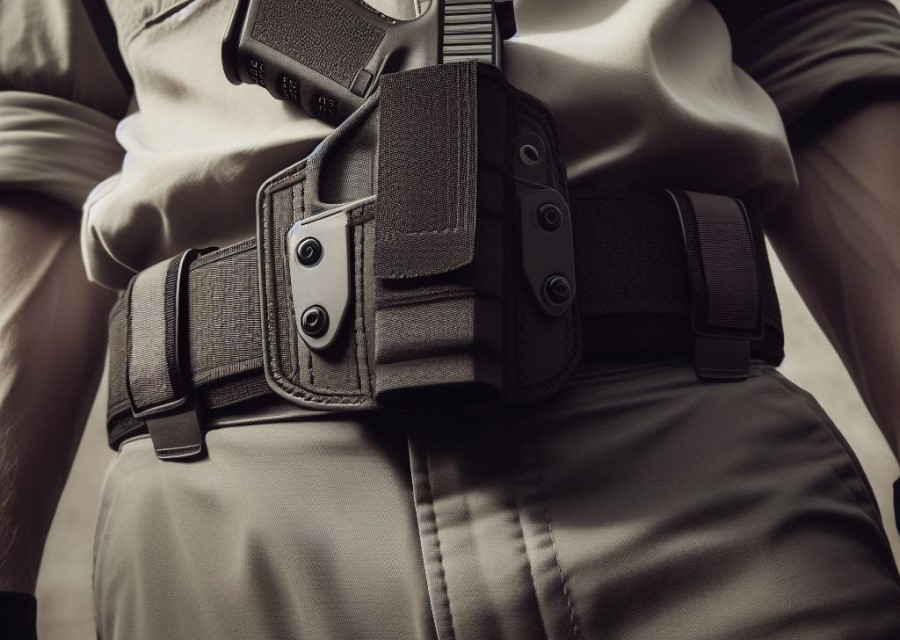
Understanding retention holsters is crucial for securely holding a firearm in place and providing an extra layer of safety.
These holsters feature adjustable retention systems that enable users to customize the level of security.
Having a grasp on how retention holsters work is essential for safe and effective firearm handling.
Retention holsters utilize mechanisms like thumb breaks, trigger guard locks, and friction to effectively keep the firearm in place.
The level of retention can be easily adjusted to meet different user preferences and situational needs.
To become familiar with the operation of a retention holster, it is important to practice drawing and reholstering.
Retention holsters are frequently utilized by law enforcement officers, military personnel, and civilians who prioritize firearm security.
What are Retention Holsters?
Retention holsters, also known as secure holsters, are specifically designed holsters meant to firmly hold a firearm in place. Law enforcement officers and individuals carrying firearms for self-defense purposes commonly use them. The main objective of retention holsters is to prevent unauthorized access to the firearm while still allowing quick and easy access for authorized users.
Retention holsters play a crucial role in ensuring safety and security. They provide an extra layer of protection against accidental discharge or unauthorized handling of the firearm. By securely holding the firearm in place, they minimize the risk of the weapon falling out or being taken by someone else.
There are various types of retention holsters available, categorized into level 1, level 2, and level 3 holsters. Each level offers different levels of retention and security. Level 1 holsters usually feature a simple mechanism, such as a thumb break or tension screw, to secure the firearm.
Level 2 holsters have additional elements like a hood or strap that must be released before the firearm can be drawn. Level 3 holsters provide the highest level of retention with multiple mechanisms that need to be disengaged.
When choosing a retention holster, it is vital to consider factors such as comfort, ease of use, and specific requirements for firearm carry. Proper adjustment of the retention holster is critical to ensure a secure fit and easy access to the firearm when necessary.
Importance of Using Retention Holsters for Safety and Security
Using retention holsters is crucial for ensuring the importance of safety and security. These holsters are specifically designed to securely hold firearms in place, effectively preventing any unauthorized access or accidental discharges. By providing an additional layer of protection, retention holsters offer peace of mind to users.
The primary benefit of using retention holsters is the significant reduction in the risk of someone seizing your firearm and using it against you or others. These holsters employ mechanisms that require intentional actions to release the firearm, thus guaranteeing that only authorized individuals can access it.
Moreover, retention holsters play a vital role in preventing unintentional discharges. By providing a secure grip on the firearm, they prevent any accidental falling out or inadvertent discharge, which is especially crucial in high-stress situations that demand split-second decisions.
It cannot be stressed enough the significance of utilizing retention holsters for safety and security. Law enforcement officers, military personnel, and responsible gun owners must incorporate these holsters into their routine to minimize the chances of accidents, unauthorized access, and potential tragedies.
Always remember to follow proper procedures and receive adequate training when using retention holsters to maximize their effectiveness. Regularly inspect the condition and functionality of your holster to ensure it remains in optimal working condition. Your safety, as well as the safety of others, heavily rely on it.
Why Should You Adjust a Retention Holster?
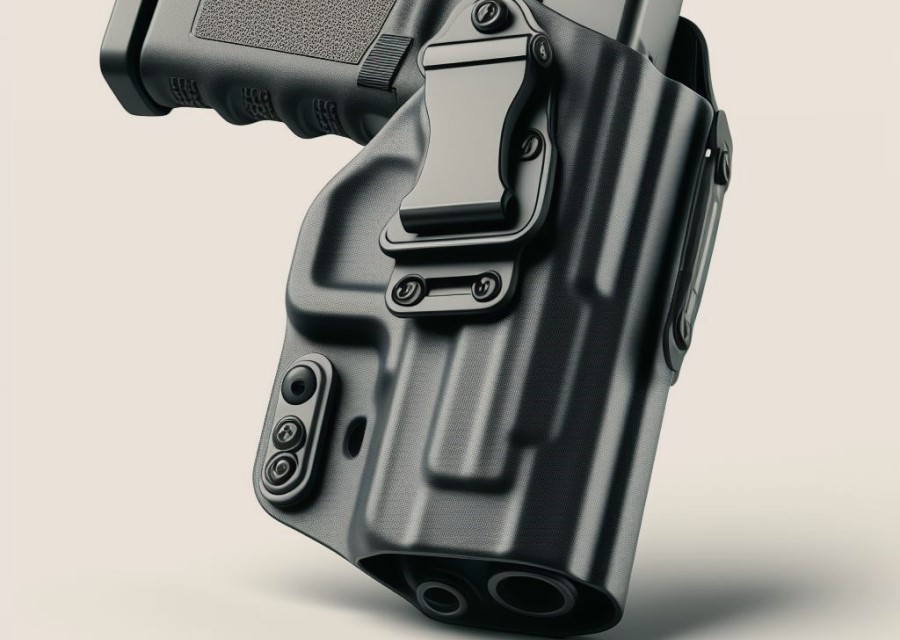
There are several reasons why it is important to adjust a retention holster:
- To ensure a secure fit: Adjusting the retention holster allows you to achieve a snug fit around your firearm, ensuring that it stays securely in place.
- To enhance weapon retention: A properly adjusted retention holster increases the level of weapon retention, providing added security and preventing unauthorized access to your firearm.
- To optimize draw speed: By adjusting the retention level of the holster, you can find the right balance between security and ease of access, enabling a smooth and quick draw when necessary.
- To improve comfort and accessibility: Properly adjusting the holster can make it more comfortable to carry and easier to reach when needed. This is especially important for individuals who carry their firearms for extended periods.
- To prevent accidental discharge: A well-adjusted retention holster helps minimize the risk of accidental discharge by providing a secure holder for the firearm and reducing the chances of it being bumped or dislodged.
Common Types of Retention Holsters
When it comes to retention holsters, it’s important to understand the various types available. In this section, we’ll delve into the three common types: Level 1, Level 2, and Level 3 Retention Holsters.
Each sub-section will explore the distinctive features and benefits these holsters offer, giving you a comprehensive understanding of how to choose the right one for your needs. So, let’s dive in and explore the world of retention holsters!
Level 1 Retention Holsters
Level 1 Retention Holsters, also known as holsters with a basic level of retention, are designed to securely hold firearms without the need for additional actions or mechanisms to release the weapon.
These holsters utilize friction or tension to keep the firearm in place. They are commonly utilized by law enforcement officers and civilians who carry firearms for self-defense. One of the key advantages of Level 1 Retention Holsters is their quick draw capability, as they do not require any extra steps to release the firearm.
However, it is important to note that these holsters may not be suitable for high-risk or physically demanding activities.
- Level 1 Retention Holsters make use of friction or tension to ensure the firearm remains securely in place.
- Law enforcement officers and civilians who carry firearms for self-defense often choose Level 1 Retention Holsters.
- These holsters allow for a rapid draw without the need for additional release actions.
- While Level 1 Retention Holsters provide a basic level of retention, they may not be appropriate for high-risk or physically demanding activities.
When using a Level 1 Retention Holster, it is crucial to ensure a snug and secure fit around the firearm to prevent accidental dislodging or movement while carrying. Regular inspection and maintenance of the holster are also recommended to ensure optimal performance.
Prior to selecting a Level 1 Retention Holster, it is essential to consider your specific needs and requirements. Factors such as comfort, accessibility, and level of security should be taken into account.
Seeking advice from knowledgeable professionals or conducting research on reputable brands can also assist in making an informed decision regarding the right Level 1 Retention Holster for your firearm.
Level 2 Retention Holsters
- Level 2 Retention Holsters provide an intermediate level of security and retention for firearms during use.
- These holsters are designed to prevent accidental dislodging of the firearm while still allowing for a relatively quick draw.
- They typically feature a combination of friction retention and additional mechanical devices for added security.
- The friction retention is adjustable to ensure a snug fit for the firearm while still allowing for a smooth draw.
- Level 2 Retention Holsters often incorporate a thumb break strap that secures the firearm in place and requires a deliberate motion to release.
- This additional strap adds an extra layer of retention and peace of mind for the user.
- It is important to properly adjust the thumb break strap to ensure a secure fit without hindering the draw.
- When adjusting a Level 2 Retention Holster, make sure the strap is tight enough to hold the firearm securely but still allows for a quick and smooth draw without excessive force.
- Testing and practicing with the holster is crucial to familiarize yourself with the adjustment mechanisms and ensure the retention is properly set.
- Level 2 Retention Holsters are favored by law enforcement officers, security personnel, and those who require a higher level of security for their firearms.
Level 3 Retention Holsters
A type of level 3 retention holsters that provides the highest level of firearm security
Features
- Multiple retention mechanisms
- Require deliberate and complex actions to draw the firearm
- Usually have thumb breaks, hoods, or other additional locking mechanisms
Advantages
- Provides superior firearm retention
- Offers an extra layer of security against unauthorized access
- Reduces the risk of accidental or unintentional firearm discharges
Disadvantages
- May require additional time and practice to draw the firearm efficiently
- Can be bulkier and heavier than lower-level retention holsters
- Higher cost compared to lower-level retention holsters
Steps to Adjust a Retention Holster
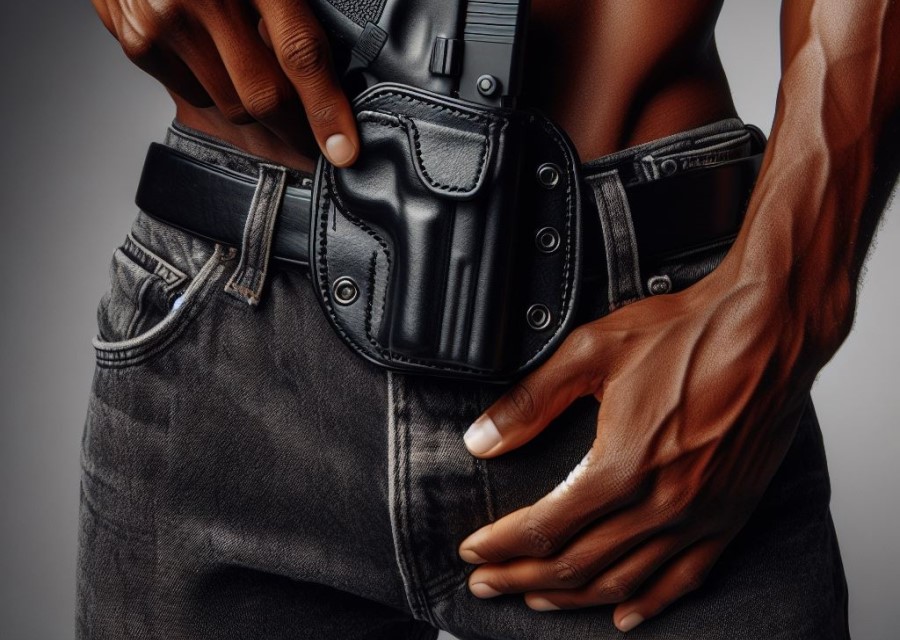
Get ready to master the art of adjusting a retention holster! In this section, we’ll take you through a series of straightforward steps that will help you achieve a perfect fit.
First, we’ll guide you on preparing the holster and firearm, ensuring they are ready for adjustment. Then, we’ll dive into familiarizing yourself with the various adjustment mechanisms, demystifying the process.
After that, we’ll show you how to adjust the retention screws or straps, allowing you to customize the level of retention as per your preference.
Lastly, we’ll discuss testing and fine-tuning the retention, guaranteeing a secure and comfortable fit. Let’s get started!
Step 1: Prepare the Holster and Firearm
When adjusting a retention holster, the first step is to prepare the holster and firearm properly. Here is a step-by-step guide to help you:
- Step 1: Prepare the Holster and Firearm – Ensure the firearm is unloaded and the magazine is removed for safety.
- Choose the appropriate retention holster for your firearm type and size.
- Make sure the holster is securely attached to your belt or waistband.
- Position the holster in a comfortable and easily accessible location on your body.
- Ensure that the holster is facing the correct direction for a quick draw.
- Check that there are no obstructions or debris inside the holster that could affect the firearm’s functionality.
- Inspect the retention mechanism of the holster to familiarize yourself with how it works.
- Verify that all retention screws or straps are properly adjusted and tightened according to the manufacturer’s instructions.
- Double-check that the firearm securely fits into the holster without any loose movements.
- Practice drawing and reholstering the firearm to ensure a smooth and controlled motion.
Following these steps will help you properly prepare the holster and firearm for the adjustment process, ensuring safe and secure usage of your retention holster.
Step 2: Familiarize Yourself with the Adjustment Mechanisms
In Step 2: Familiarize Yourself with the Adjustment Mechanisms, it is important to inspect the retention holster to identify the specific adjustment mechanisms. Different types of retention holsters may have varying adjustment mechanisms, such as screws, straps, or levers. Take note of the positioning of these adjustment mechanisms and understand their purpose. It is crucial to have a clear understanding of how each mechanism functions and how it affects the retention of the firearm. Also, familiarize yourself with any locks, buttons, or releases associated with these adjustment mechanisms. Practice manipulating the adjustment mechanisms multiple times to become comfortable with their operation. During this process, it is essential to proceed with caution and avoid any accidental adjustments to the retention while getting familiar with the mechanisms. To get specific details on the adjustment mechanisms of your retention holster, refer to the manufacturer’s instructions or user manual. Make sure you are fully aware of the adjustments you can make and the effects each adjustment will have on the retention of your firearm. By achieving familiarity with the adjustment mechanisms, you will be better prepared to make precise and controlled adjustments to achieve the desired level of retention.
Step 3: Adjust the Retention Screws/Straps
When adjusting the retention screws/straps on a holster, follow these steps:
- Ensure the firearm is unloaded and the holster is empty.
- Familiarize yourself with the location and function of the retention screws/straps on your specific holster model.
- To adjust the retention screws/straps, use the appropriate tool and turn them clockwise to increase the retention or counterclockwise to decrease the retention. If your holster has retention straps, make sure to adjust them to achieve the desired tension.
- It is recommended to make small adjustments at a time and regularly test the retention to avoid over-tightening or loosening.
It is important to note that the level of retention should be adjusted according to individual preference and the specific needs of the user.
Factors such as the type of firearm, the environment in which the holster will be used, and the user’s level of comfort and accessibility should be taken into consideration when adjusting the retention screws/straps.
Step 4: Test and Fine-tune the Retention
When adjusting a retention holster, it is crucial to thoroughly test and fine-tune the retention to achieve optimal performance. Follow these steps:
- Prepare the Holster and Firearm: Make sure the firearm is unloaded and securely attached to the holster.
- Familiarize Yourself with the Adjustment Mechanisms: Take a close look at the retention screws or straps and understand their functionality.
- Adjust the Retention Screws/Straps: Depending on the type of retention holster, use the appropriate tool to tighten or loosen the screws or straps until you reach the desired retention level.
- Test and Fine-tune the Retention: While the firearm is properly holstered, perform various movements such as walking, bending, and even jogging to evaluate the retention. Make minor adjustments to the screws or straps as needed to ensure a secure fit without compromising quick and easy access to the firearm.
It is essential to emphasize that the retention should be adjusted in a manner that securely holds the firearm in the holster during regular activities while enabling a smooth and efficient draw when necessary.
Fun Fact: Holster retention levels are commonly rated on a scale from 1 to 3, with level 1 having the lowest retention and level 3 offering the highest retention.
Additional Tips on How to Adjust a Retention Holster
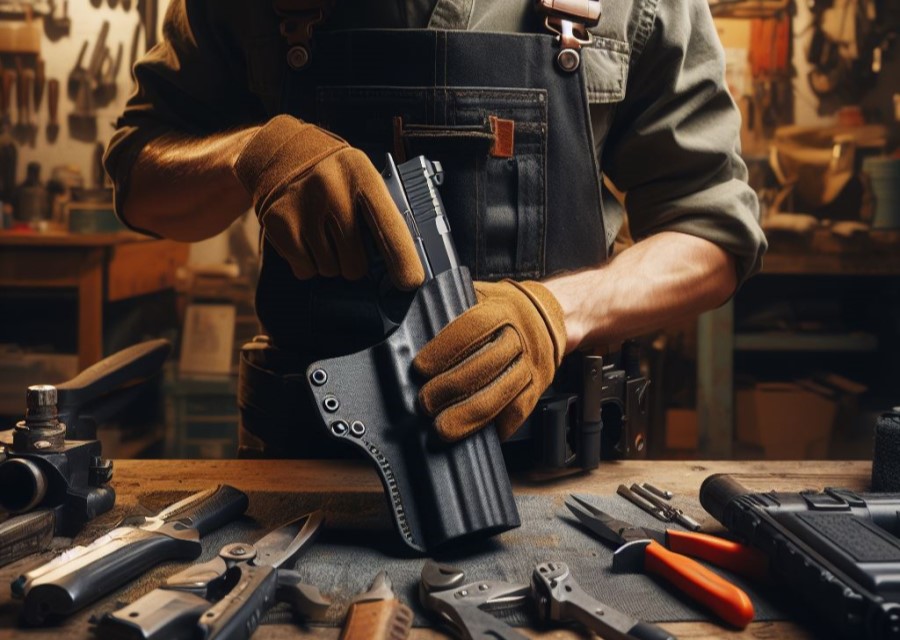
Here are some additional tips for properly adjusting a retention holster:
- Ensure the holster is snug and secure on your belt or waistband.
- Adjust the retention screws to find the right level of tension for a secure fit.
- Practice drawing and reholstering your firearm to ensure smooth and efficient movements.
- Consider using a holster with adjustable cant or ride height to find the most comfortable and accessible position.
- Regularly inspect and maintain your holster to ensure it remains in proper working condition.
Fact: Proper holster adjustment is crucial for firearm safety and quick, reliable access to your weapon in self-defense situations.
Ensuring Safety and Security when Using a Retention Holster
Ensuring safety and security when using a retention holster should be a top priority. Choose a quality retention holster that is specifically designed for your firearm to guarantee its effectiveness.
Make sure the retention mechanism is properly adjusted to provide the right amount of retention for your needs. It should not be too loose, as the firearm could fall out, nor too tight, as it may hinder a quick draw.
It is crucial to familiarize yourself with the proper drawing technique for your retention holster. Regular practice of drawing and reholstering your firearm will help build muscle memory and ensure a smooth and efficient response.
Regularly inspect and maintain your retention holster to ensure it remains in good working condition. Check for signs of damage or wear that could potentially affect its performance and address any issues promptly.
Always keep your finger off the trigger when using a retention holster until you are ready to shoot. This simple precautionary measure helps prevent accidental discharges and ensures safe handling.
Being aware of your surroundings at all times is essential. Never point your firearm at anything or anyone you do not intend to shoot, as it can lead to tragic and irreversible consequences.
To master the effective and safe use of your retention holster, include training scenarios that simulate real-life situations. Regular practice will help you become proficient in its usage.

